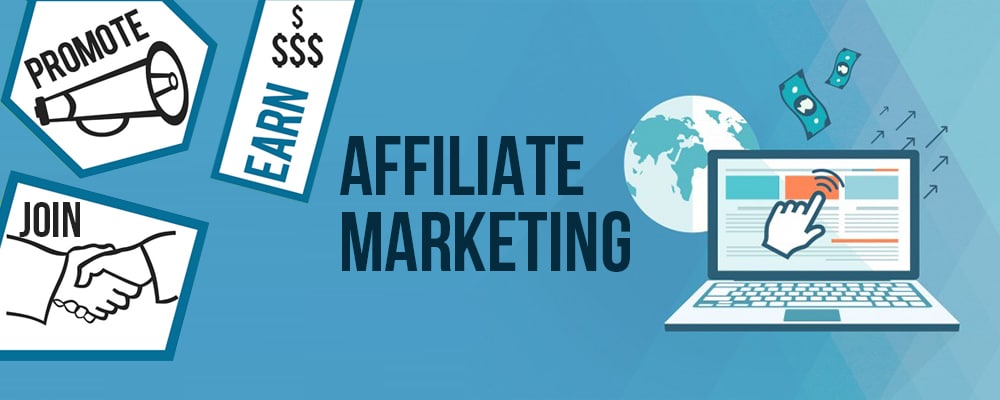The selling process relies heavily on marketing. It assists sales teams in identifying and qualifying prospects and maintaining in touch with them throughout the sales cycle. The sales and marketing divisions are typically separate in most companies, but integrating the two can assist boost revenue and profits.
What Is A Marketing Strategy?
A marketing strategy is a business plan to reach out to potential leads and turn them into lifelong customers. It involves developing a compelling value proposition, establishing a brand message, and developing a strategy for increasing sales.
If a customer doesn’t require or desire something, you can’t sell your products or services. A strong marketing strategy should always incorporate research and reporting components to assist sales in identifying ‘gold’ in prospective and existing client data to generate additional revenue.
You can accelerate revenue growth through successful marketing strategies which focus on providing critical information to contacts at viable prospect companies, such as:
- Identified industry;
- Location;
- Company size;
- Revenue;
- Department;
- Job title and responsibility; and
- Current technology.
These data elements are critical before developing your strategy. As marketers become more focused on revenue, they realize that the usual revenue marketing metrics aren’t always representative of the full impact of their marketing efforts. So, here are just some tried and tested marketing strategies you can employ in your organization to drive revenue:
#1. Analyze And Use Various Data And Reports
Sales teams are always looking for ways to improve their marketing efforts to generate new leads. A great marketing strategy can always include various reporting components to help identify and gain new customer data.
But you need to use data effectively and reach a sizable portion of your target client group to be successful. As a marketer, you want to attract clients who won’t only convert and buy from you, but also recommend your brand to others. Thus, the importance of using data-driven marketing gives you a clear picture of how effective your marketing efforts are.
#2. SMS Marketing
Due to the increasing popularity of SMS (short message service) as a marketing tool, many digital marketing agencies are missing out on the opportunity to increase customer engagement and improve their bottom line.
Contrary to popular belief, mobile marketing doesn’t require heavy investment and doesn’t involve apps. Instead, it can be as simple as SMSing a personalized message to a mobile subscriber.
Also, you may create a compelling and unique message with a specific shortcode or phrase. It’s said to be a great way to start interacting with customers. This strategy will help them become familiar with the brand’s code and message.
Overall, SMS is a way to enhance how your brand engages with its customers across the entire sales lifecycle. It can be used to improve the way you communicate with them too.
#3. Employ Targeted Advertising
Targeted advertising enables brands to communicate with different consumers based on the brand’s information about the customer. The more effectively a business understands what its patrons want and need, the more likely clients will respond to advertising and engage with the brand.
Due to the availability of more information about individuals, targeted advertising is becoming easier. To top online search engines, you need to go over all of the possible terms and how they’re relevant to your website’s target visitors. If you want to attract as many readers as possible, you need to create a lot of content on a wide range of themes and leave comments on similar pieces.
It’s possible to drive more attention to your online page to establish partnerships with other content creators. This way, your content could reach more readers and eventually generate revenue for your business.
#4. Strengthen Your Content Marketing
Creating and distributing content that’s relevant to current and prospective clients is called an online content marketing strategy. This process shows a business’s commitment to the individuals it sells.
You can create content that attracts, engages, and sells by showcasing your unique selling proposition. Also, you can inspire brand loyalty by reaching the right individuals with strategic content marketing methods.
Remember that the importance of content marketing is to boost your website’s search engine rankings and attract new leads. It’s a good strategy that helps build and maintain strong relationships with existing and potential customers.
#5. Personalize Your Customers’ Experience With Your Brand
Personalization is probably nothing new to you. In your email, tailored offers and services begin with a ‘Hello, ____(your name)’ and go far beyond. Personalization is the process of designing or developing products and services that meet the needs of individual customers. This is done by identifying the right people and processes to deliver custom products and services that meet their expectations.
A one-size-fits-all marketing approach is regarded as not ideal in today’s world. Instead, it should be personalized according to the needs and interests of the potential customer. Due to the implementation of numerous laws, it’s now harder for businesses to gather and use personal information. Instead, many companies decided to focus on creating buyer personas and developing a strategy to generate leads.
#6. Utilize Chatbots
One of the most important factors to consider when increasing sales is to ensure that your website can accommodate queries at most times of the day. A popular way to do this is by including a chatbot on your website. A chatbot is a program that automatically responds to messages. It can also learn how to respond to different types of messages; hence, as it interacts more with clients, its responses become more natural over time.
#7. Practice Retargeting
Retargeting is the practice of showing your advertisements to visitors who have left your website. Partner sites will house your ads on pages your visitors visit, keeping you top of mind.
Advertisers bid on ad placements for each web page, placed in front of the most relevant audiences. This process takes place in milliseconds and can be done through several platforms. Each platform has its bidding system; one bids on clicks and impressions, while the other is based on impressions.
Retargeting is the most compelling part of your digital marketing strategy. It allows you to reconnect with customers who weren’t ready to convert during their first encounter with your brand.
What Are the 7PS of Marketing Strategy?
It is critical to grasp the 7 Ps of marketing when developing a sound and effective marketing mix. Consideration of product, pricing, place, promotion, place, people, process, and physical evidence will assist you in ensuring a consistent and successful message at all stages of your marketing mix.
What Are the 7PS of Marketing by Philip Kotler?
This study discovered two variables, both of which are X Variables or Independent Variables, which are Marketing Mix 7P whose theory was articulated by Kotler and Armstrong (2001) and included Product, Price, Place, Promotion, Process, People, and Physical Evidence.
What Are the 7PS of Marketing With Example Services?
The 7ps of service marketing is a version of the four Ps of product marketing that solely applies to customer service businesses such as hotels, insurance firms, salons, airplanes, and so on. Product, Price, Place, Promotion, People, Process, and Physical Evidence are the seven Ps of the service marketing mix.
What Are the 11 P’s of Marketing?
Product, pricing, place (distribution), promotion, people, process, physical evidence, personal relationships, packaging, positioning, and performance are the 11 aspects.
Takeaway
Each strategy mentioned in this article has its advantage and may be more effective for some companies than others. It’d help if you also remembered that you could mix several different strategies. However, there’s no doubt that the key to success is to understand your customers better.
You can do this if you must look at their behaviors, requirements, and issues and use the appropriate techniques to meet these. It’s all about the bottom lines of businesses and achieving outcomes. Without marketing, it’s impossible to sell your products or services.






